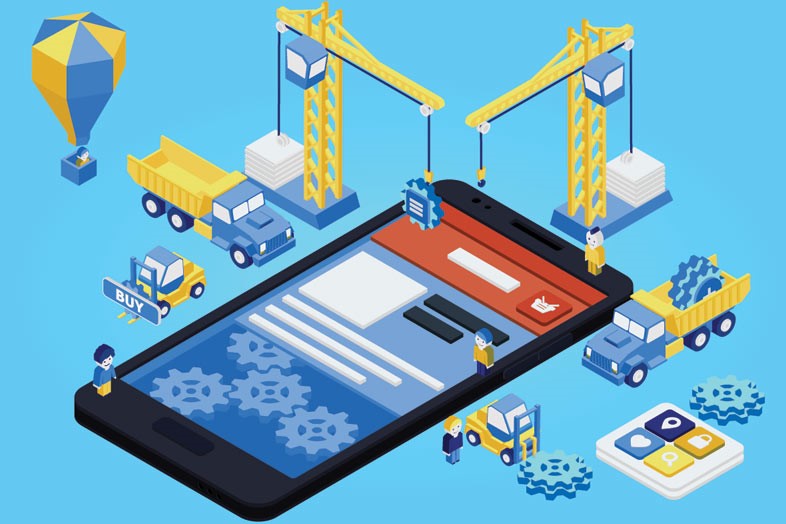Introduction
Welcome to our comprehensive guide on mastering the art of app development. In this article, we will delve into the intricacies of creating successful applications, from conceptualization to launch and beyond. Whether you’re a seasoned developer or a newcomer to the world of app development, this guide will provide you with valuable insights, tips, and techniques to enhance your skills and create remarkable applications that stand out in the competitive market.
Understanding the Fundamentals
What is App Development?
App development refers to the process of creating software applications for mobile devices, such as smartphones and tablets. These applications can be designed for various operating systems, including iOS, Android, and Windows. App development involves a combination of programming, design, and user experience considerations to deliver a seamless and engaging app that meets the needs and desires of its target audience.
The Importance of User Experience (UX)
User experience plays a vital role in the success of any application. A well-designed app with intuitive navigation, visually appealing interfaces, and seamless interactions is more likely to attract and retain users. To master the art of app development, it is crucial to prioritize UX throughout the entire development process. By understanding the needs and preferences of your target audience, you can create an app that not only meets their expectations but exceeds them.
Key Stages in App Development
1. Conceptualization and Planning
The first stage of app development involves conceptualizing your idea and planning its execution. This phase requires thorough market research to identify gaps, understand competitors, and validate your app concept. By conducting market analysis and gathering user feedback, you can refine your app’s features and functionality, ensuring it aligns with market demand.
2. Design and Prototyping
Once you have a clear understanding of your app’s purpose and target audience, it’s time to move on to the design phase. Here, you’ll create wireframes and prototypes to visualize the app’s layout, user interface, and overall aesthetics. Design elements such as color schemes, typography, and imagery should be carefully chosen to reflect your brand and create a cohesive user experience.
3. Development and Testing
With the design in place, the development phase begins. Skilled programmers will transform your app concept into a functional product, writing clean code and implementing the desired features. Throughout the development process, rigorous testing should be conducted to identify and fix any bugs or usability issues. User feedback and beta testing can provide invaluable insights for further improvement.
4. Deployment and Launch
Once your app is thoroughly tested and refined, it’s time to deploy and launch it in the app stores. App store optimization (ASO) techniques should be employed to enhance visibility and increase downloads. This includes optimizing the app title, description, keywords, and screenshots to attract potential users and rank higher in search results. Additionally, promoting your app through various marketing channels will help generate awareness and attract a wider audience.
5. Post-Launch Support and Updates
The launch of your app is just the beginning of its journey. Ongoing support, maintenance, and regular updates are essential to keep your app relevant and competitive in the ever-evolving mobile landscape. Listening to user feedback and incorporating feature enhancements and bug fixes will ensure a positive user experience, leading to higher user satisfaction and improved app ratings.
Best Practices for App Development Success
1. Focus on User-Centric Design
Always prioritize user experience when designing your app. Conduct user research, create user personas, and ensure that your app addresses their pain points effectively. Intuitive navigation, clear calls to action, and streamlined workflows will make your app a joy to use, resulting in increased user engagement and positive reviews.
2. Optimize for Performance
A fast and responsive app is crucial for user satisfaction. Optimize your code, compress images, and minimize network requests to ensure smooth and seamless performance across different devices and network conditions. Regularly test your app’s performance and make necessary improvements to enhance its speed and efficiency.
3. Leverage Analytics
Integrate robust analytics tools into your app to gain insights into user behavior, engagement, and app performance. Analytics data can help you identify areas for improvement, track user acquisition and retention, and make data-driven decisions to enhance your app’s features and functionality.
4. Embrace Continuous Improvement
App development is an ongoing process. Continuously seek feedback from your users and iterate on your app’s design and features accordingly. Stay updated with the latest trends and technologies in the App Development industry to ensure your app remains competitive and delivers a cutting-edge experience to its users.
Conclusion
Mastering the art of app development is a continuous journey that requires a combination of technical expertise, creative design, and a deep understanding of user needs. By following the best practices outlined in this comprehensive guide, you’ll be well-equipped to create exceptional apps that surpass the competition and resonate with your target audience.
